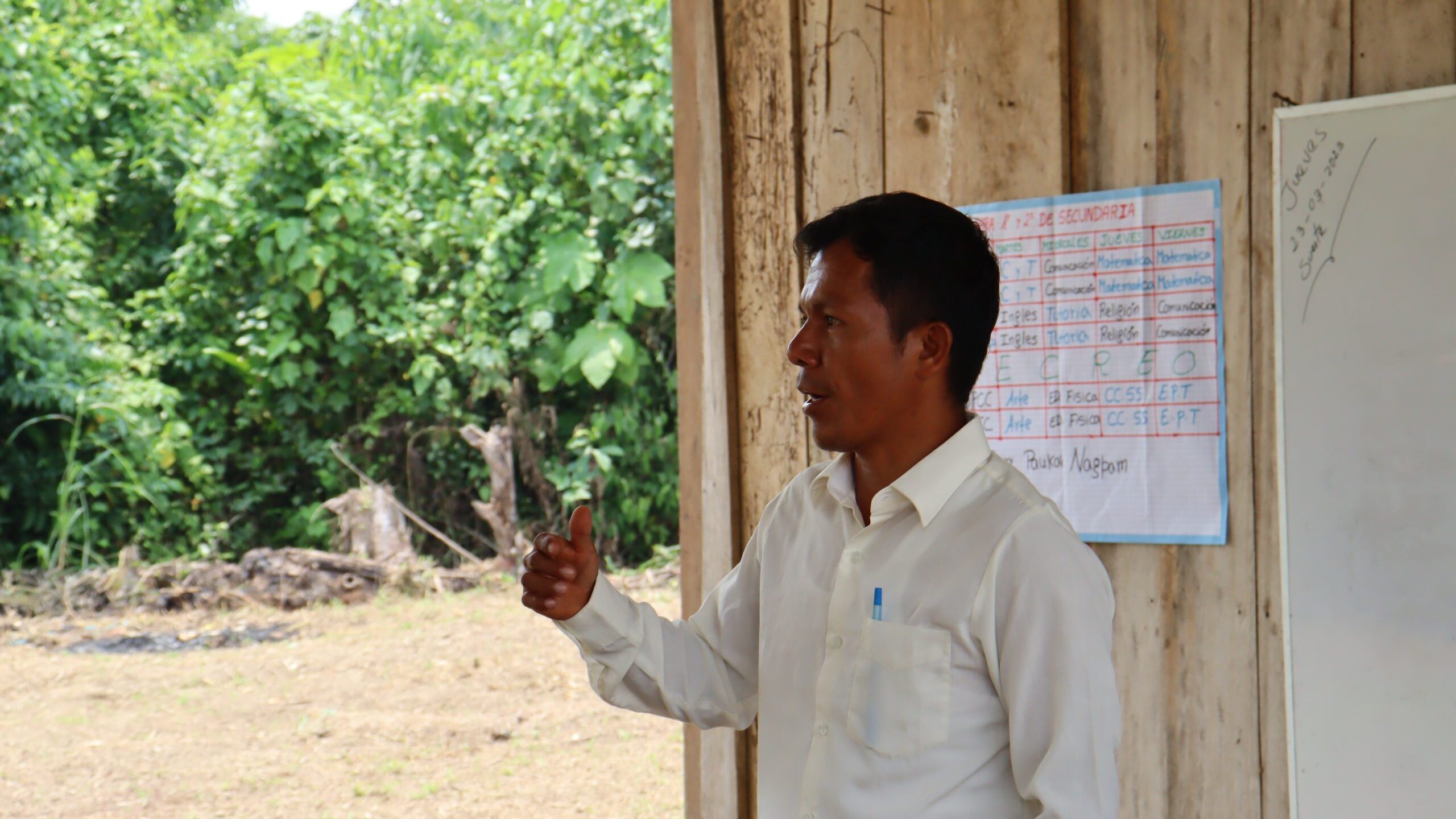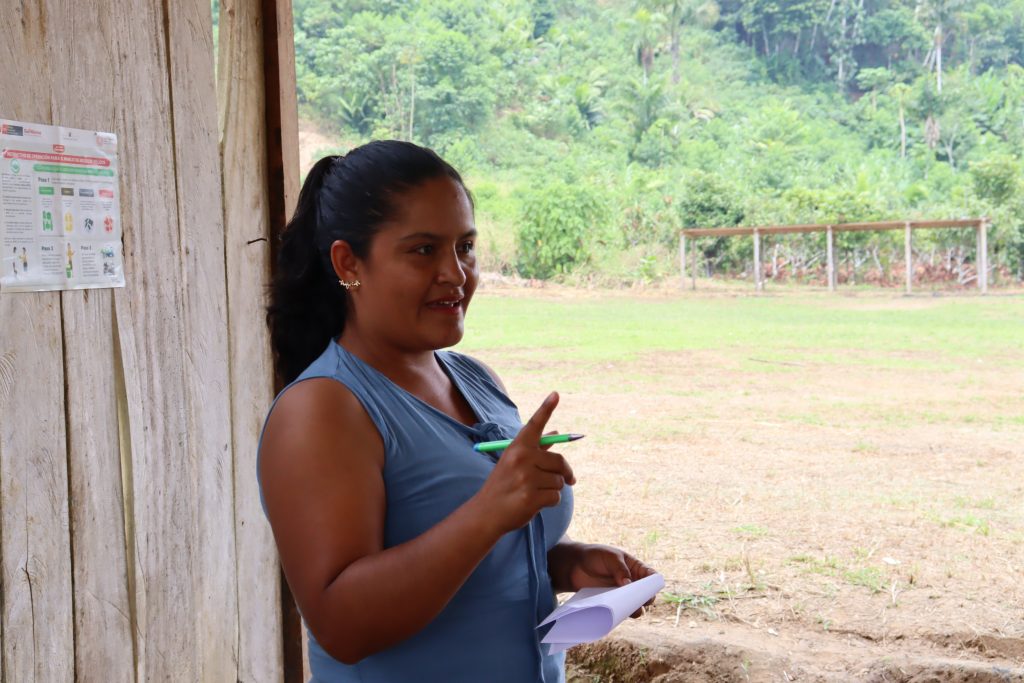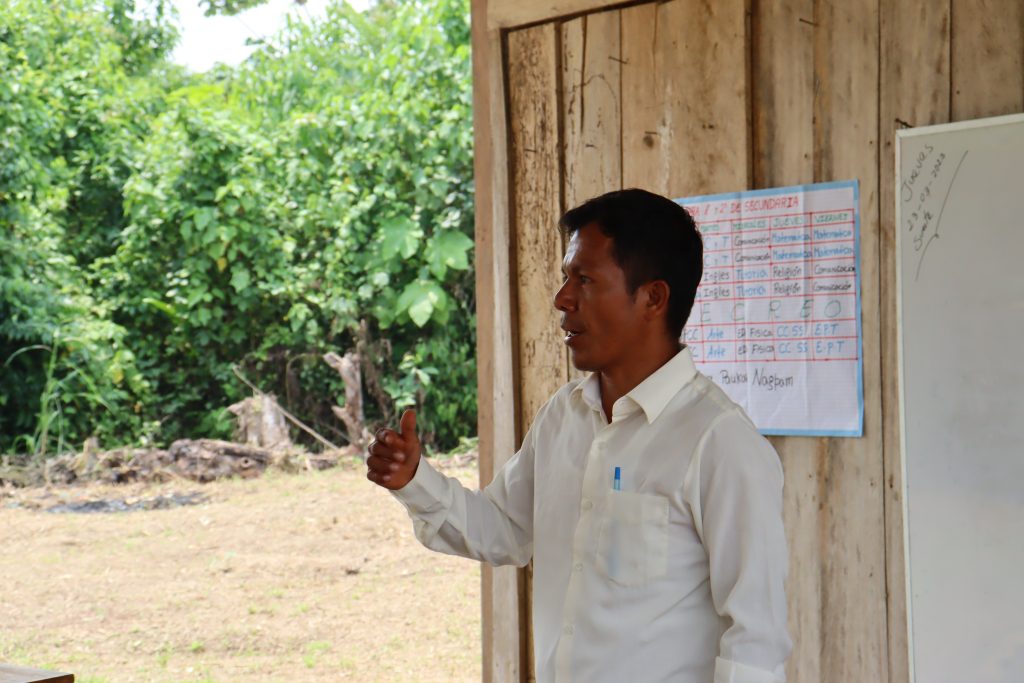
Agricultural education: Awajún students get a head start
Take powerful climate action“Education and nutrition, that’s what we achieve in schools.”- Hisely Torres, Cool Earth technician in Peru
300 secondary school pupils Awajún communities within our Peru partnerships, aged between 12-17 from 1st to 5th grade are participating in training sessions to learn cacao cultivation, fish farming, and regenerative agriculture techniques.
Learning life skills
In their maths classes, the students are practising exercises that will equip them with the tools needed for their professional futures. For example, exercises that help them calculate how many kilograms of cacao a tree produces each season or how many fish can be raised in a 10×15 metre pond.

Since Cool Earth began working on agricultural education with schools in the Awajún communities of Huaracayo and Urakuza, teachers, principals, and parents have committed to incorporating cacao, fish farming, and regenerative agriculture into all aspects of learning.
“For me, it’s a new experience in my nine years of teaching,” says Karina Peña, a school principal. “There are great expectations because all the students are working on projects that will be very useful to them. We have to consider that many of them are on the verge of finishing secondary school, and not all of them have the opportunity to go to the city and pursue professional training. This project will help them a lot, at least they will have some tools to go forward.”
Securing futures
In Peru, poverty levels have increased, making it increasingly difficult for the most vulnerable families to support their children in completing their studies. Public universities don’t have the capacity and families’ high fees block families from sending their children to private ones. In 2022 alone, poverty affected 9 million Peruvians, impacting 1 in 2 people in non-urban areas.

Gairy Paukai, a teacher at the Huaracayo school, witnesses the effects of poverty every day. “In this area, there isn’t enough food, let alone balanced meals. In the cities there are vegetables and meat, but here people don’t eat properly or even daily. Some students come without having breakfast, and many suffer from chronic malnutrition. That’s why we want to promote these kinds of projects for them. There’s still a lot to implement, but that’s why the initiative of institutions like Cool Earth is important.”
Hisely Torres, a Cool Earth technician in Peru, explains that these “work education classes” have both theoretical and practical sessions, allowing students to harvest cacao, fish, corn, and beans. “Everything that is harvested or collected benefits the school, either for the students’ consumption or for the classrooms to sell and buy supplies or materials they need. Education and food, that’s what we achieve in the schools.”
What’s next?
This year, after listening to the students, together we developed and expanded this project to include the topic “conservation work” Find out more in this recent article.
This education project provides students with the skills and knowledge needed to kick-start their futures in agriculture if they wish. Be it fish farming or growing cacao and coffee, they will be able to provide food and financial security for themselves and their families.
With the cash you donate, we can continue supporting projects that create choices and sustainable incomes for rainforest communities. Donate here.